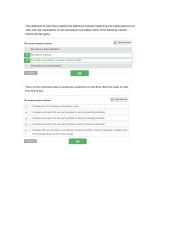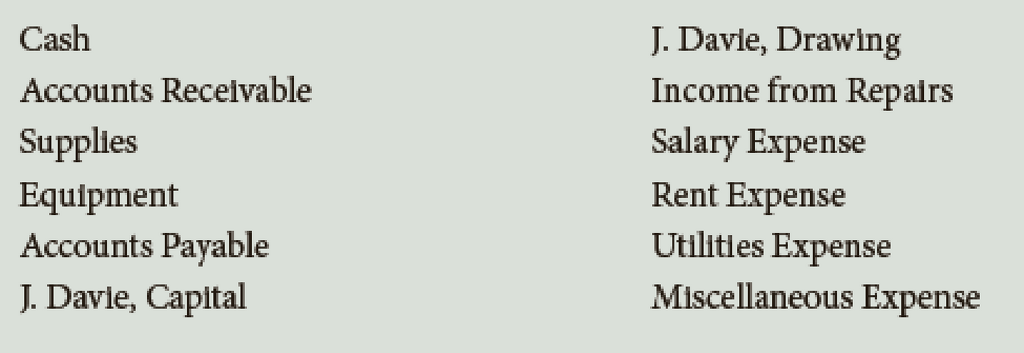Content

The difference between the sale price and the cost of merchandise is the profit of the business that would increase the owner’s equity by $1,000 (6,000 – $5,000). On the other side of the equation, a liability (i.e., accounts payable) is created. On 2 January, Mr. Sam purchases a building for $50,000 for use in the business. The impact of this transaction is a decrease in an asset (i.e., cash) and an addition of another asset (i.e., building). The third part of the accounting equation is shareholder equity. Having cleared up the terminology, we can start to explain the purpose of the accounting equation.
She holds a Bachelor of Science in Finance degree from Bridgewater State University and helps develop content strategies for financial brands. Full BioAmy is an ACA and the CEO and founder of OnPoint Learning, a financial training company delivering training to financial professionals. She has nearly two decades of experience in the financial industry and as a financial instructor for industry professionals and individuals.
Ready to grow your business?
This transaction brings cash into the business and also creates a new liability called bank loan. At this point, let’s consider another example and see how various transactions affect the amounts of the elements in the accounting equation. The rights or claims to the properties are referred to as equities. The next activity should help you to understand the importance of both forms of the accounting equation. It’s vitally important that the accounting equation balance because, if not, your financial reports will not make sense.
- Revenue received before it is recognized and expenses used or consumed before being paid are both initially recorded as liabilities.
- A double-entry bookkeeping system involves two different “columns;” debits on the left, credits on the right.
- Hiring a new employee affects both sides of the accounting equation.
- This may indicate that you aren’t managing your money very well.
- The global adherence to the double-entry accounting system makes the account keeping and tallying processes more standardized and more fool-proof.
Consistency in accounting means that a company uses the same generally accepted accounting principles from one accounting period to the next accounting period. The debt to assets ratio measures the percentage of assets financed by creditors. The investment category on the balance sheet normally includes investments that are intended to be held for a short period of time . Information in the notes to the financial statements has to be quantifiable . The accounting equation is fundamental to the double-entry bookkeeping practice. Its applications in accountancy and economics are thus diverse.
The accounting equation can be expressed – The accounting…
The accounting equation shows on a company’s balance that a company’s total assets are equal to the sum of the company’s liabilities and shareholders’ equity. Double-entry accounting is a way to keep track of your business’s finances by tracking every transaction that happens. This means if you buy something for $500, and it shows up as an asset on one side of the equation, then there must also be a liability or equity account entry with equal value. For example, when buying commercial property using loans from lenders like banks – both sides should increase because they’re related transactions. However, understanding how all these numbers work together will help you understand your financial health. It will also empower you to make smarter decisions about what comes next.

Locate the company’s total assets on the balance sheet for the period. The equation is a simplified breakdown of the values entered in the balance sheet. It illustrates the relationship between a company’s assets, liabilities , and shareholder or owner equity . A business’s liabilities are what they owe or have to pay to continue operating the business.
Accounting Equation – Explained
B. The organization that formulates generally accepted accounting principles is the Financial Accounting Standards Board. A merchandising company’s net income is determined by subtracting operating expenses the accounting equation can be expressed as from gross profit. Nonoperating activities include revenues and expenses that are related to the company’s main line of operations. Freight-out appears as an operating expense in the income statement.
In a corporation, capital represents the stockholders’ equity. Thus, the accounting formula essentially shows that what the firm owns has been purchased with equity and/or liabilities. An asset is what gives your business added value on top of cash flow. Subsequently, a business’s assets can include cash, liquid assets (i.e., certificates of deposit and Treasury bills), prepaid expenses, equipment, inventory, and property.
Liabilities
Cash restricted in use should be separately reported on the balance sheet. Control over cash disbursements is improved if major expenditures are paid by check. Internal auditors are independent contractors who evaluate the effectiveness of a company’s internal control sysems. It is unlikely that a company would want to bond its employees who handle cash or inventory.
